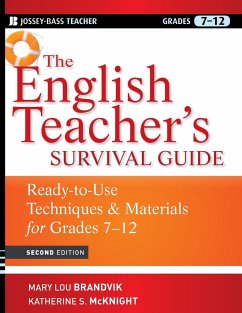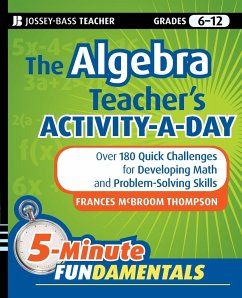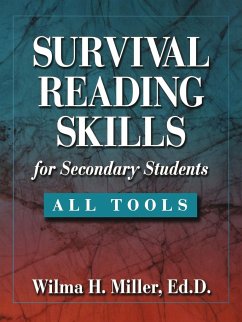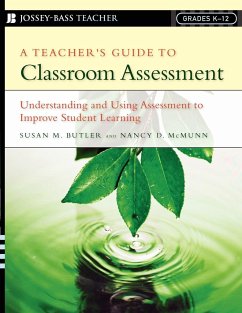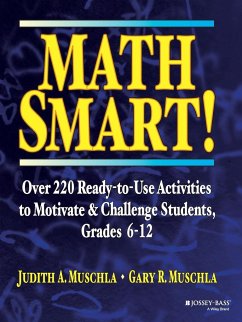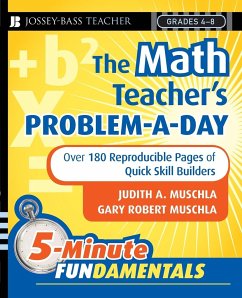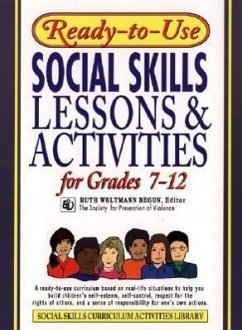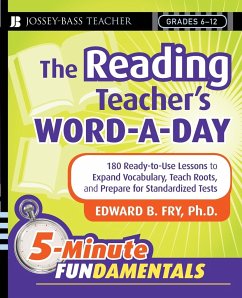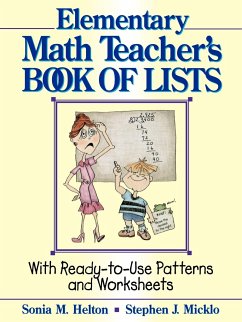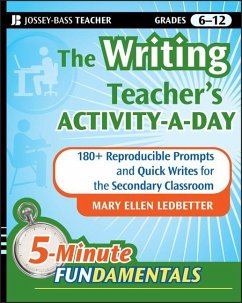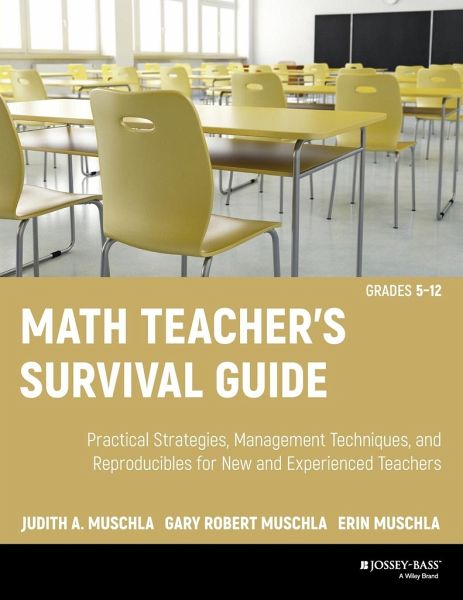
Math Teacher's Survival Guide: Practical Strategies, Management Techniques, and Reproducibles for New and Experienced Teachers, Grades 5-12
Versandkostenfrei!
Versandfertig in über 4 Wochen
25,99 €
inkl. MwSt.
Weitere Ausgaben:

PAYBACK Punkte
13 °P sammeln!
MATH TEACHER'S SURVIVAL GUIDE GRADES 5-12 As a math teacher you have an extremely demanding job--you must plan and deliver meaningful math instruction, meet the needs of the diverse range of students in your classroom, teach problem-solving and critical thinking skills, integrate technology in student learning, and prepare students for standardized tests. In your "spare" time you must take attendance, grade papers and tests, keep records, maintain order in the classroom, and communicate with parents and administrators. In the newest addition to the Jossey-Bass Teacher Survival Guide series, Ju...
MATH TEACHER'S SURVIVAL GUIDE GRADES 5-12 As a math teacher you have an extremely demanding job--you must plan and deliver meaningful math instruction, meet the needs of the diverse range of students in your classroom, teach problem-solving and critical thinking skills, integrate technology in student learning, and prepare students for standardized tests. In your "spare" time you must take attendance, grade papers and tests, keep records, maintain order in the classroom, and communicate with parents and administrators. In the newest addition to the Jossey-Bass Teacher Survival Guide series, Judith, Gary, and Erin Muschla offer a wealth of practical advice that will help both new and seasoned teachers to develop the skills necessary to succeed in this most challenging profession. The Math Teacher's Survival Guide includes * Realistic strategies for planning and delivering the most effective math instruction * Help for achieving excellence and remaining enthusiastic about teaching * Reproducible forms to help you stay on top of everything you need to do, also featured on a CD for your convenience * Numerous sources for additional information, web sites, a list of references, and suggested readings The Math Teacher's Survival Guide is designed to help you manage daily classroom demands while you continue to grow as a passionate professional. Praise for the Math Teacher's Survival Guide "Beginning and experienced math teachers alike are sure to benefit from this book's comprehensive collection of practical advice, useful tips for classroom management, lesson planning, and instruction. It will help math teachers become valuable members of their teaching communities." --LAUREN KOLMER, 6th grade mathematics teacher, Millburn Middle School, Millburn, New Jersey "The Math Teacher's Survival Guide is an excellent resource for all math teachers, no matter what they might encounter on the job, including preparing to teach; classroom organization and management; student, parent, and colleague interactions; acquisition of classroom materials and instructional ideas; and student evaluation and record keeping." --MICHAEL SCHIRO, Ph.D., associate professor, Lynch School of Education, Boston College "An excellent resource not only for the mathematics teacher but for all middle and high school teachers. It contains an extensive compilation of practical ideas and information that will smooth the rocky path to developing mathematics content knowledge and a love for the subject." --GERALD R. FAST, PH.D., professor of mathematics education, University of Wisconsin, Oshkosh




